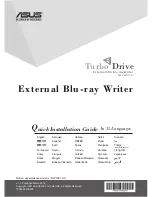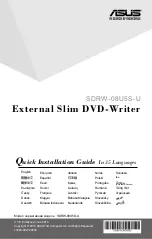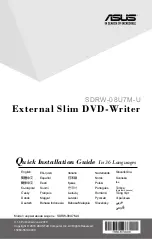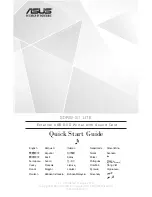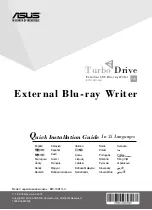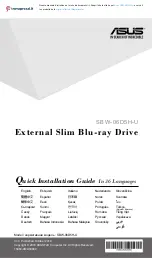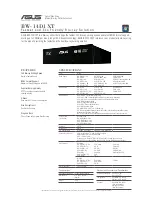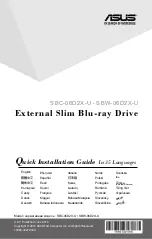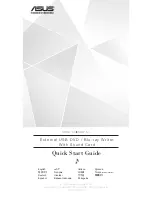
Introduction English
-- E-3 --
y
Smooth DVD playback
y
Low power consumption
y
Front panel rotary volume control
y
Back panel analog audio output and digital audio output
2.3.
Format Compatibility
This COMBO drive is compatible with the following formats:
”Read” means Data Transfer;
Format Write
Read
CD-DA Y
Y
CD-ROM Y
Y
CD-Extra Y
Y
CD-ROM/XA Y
Y
Photo-CD* Y
Y
CD-I* Y
Y
CD-TEXT Y
Y
DVD-ROM(DVD-5, DVD-9, DVD-10, DVD-18)
Y
DVD+RW, DVD-RW
Y
* CD-I, Photo-CD requires special reader/player; Photo-CD writing requires Kodak license
2.4.
Type of Writing
Disc-At-Once
When only a single recording session (lead in/data/lead out) is to be recorded onto a disk,
it is called “Disc-At-Once”.
When using Disc-At-Once, no additional data can be recorded onto the disc, even if
there is available capacity.
The advantage of this method recording is that it enables creation of discs that can be
played back on almost any CD player or CD-ROM drive, because there are no links
inserted between the data tracks.
Track-At-Once
When many sessions are to be recorded onto a disc, it is called “Track-At-Once”. If there
is space available on the disc, additional data can be recorded onto it.
The advantages of this method include being able to record additional sessions onto a
disc, and using a CD-ROM of backup data. (Refer to “Multisession”.)
Session-At-Once
A "Session-at-Once" recording almost corresponds to a "Disc-at-Once recording", i.e. all
data ("Lead-in", data area and "Lead-out" are written in one go.
The only difference is that the CD is not "finished", i.e. after a "Session-at-Once"
recording you still have the possibility to write a further "Session" on the CD at a later
date.



























